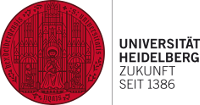Translanguaging in social media. Output for FLT didactics
Identifiers (Article)
Identifiers (Files)
Abstract
In the age of the internet, where over 2.6 billion people worldwide use social media to communicate, it is not uncommon to find instances of different languages being used within the same post on social media channels. This paper discusses the terminology used to describe this multilingual practice with particular emphasis on translanguaging theory. Its focal point is to explore why people engage in this type of multilingual discursive practice in social media, to investigate the attitudes towards digital translanguaging by the online community, and what impact translanguaging can have on foreign language teaching didactics, particularly bilingual education. A survey was carried out with 360 participants with a variety of socio-cultural backgrounds, and the results show that speakers engage in translanguaging in social media because they find it easier to express themselves and not for reasons such as to impress others. The paper also scrutinizes the didactic implications of translanguaging, and how it can be enhanced by social media insight. Understanding the motivation behind digital translanguaging may have a profound effect on how we come to understand hybrid multilingual discourse and its potential implementation in the classroom.
Statistics






